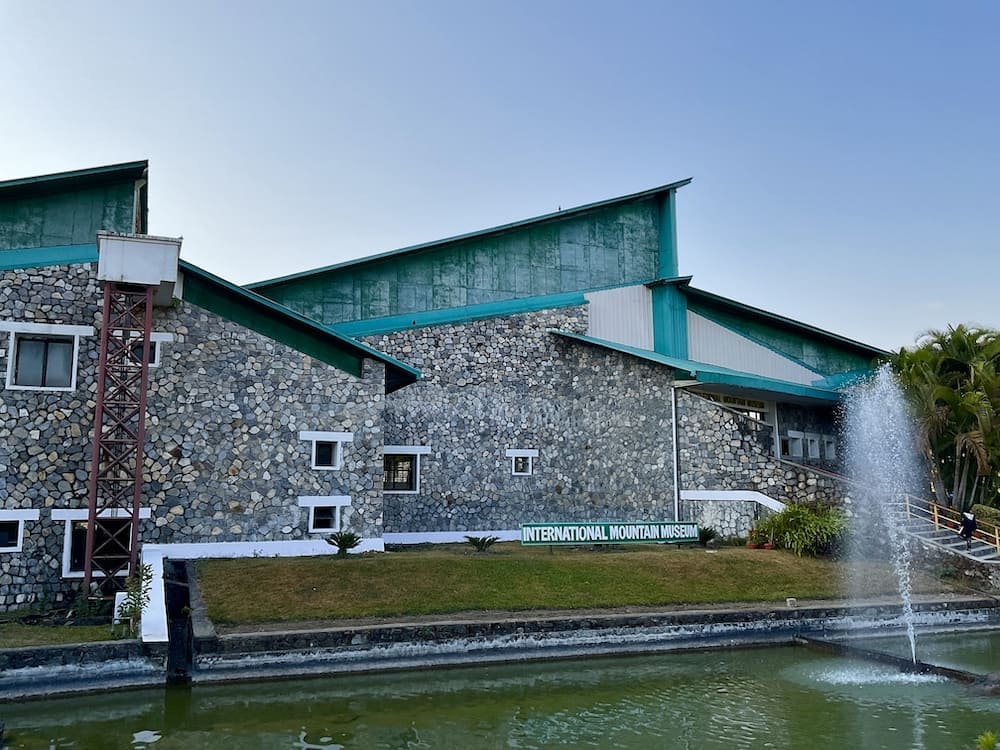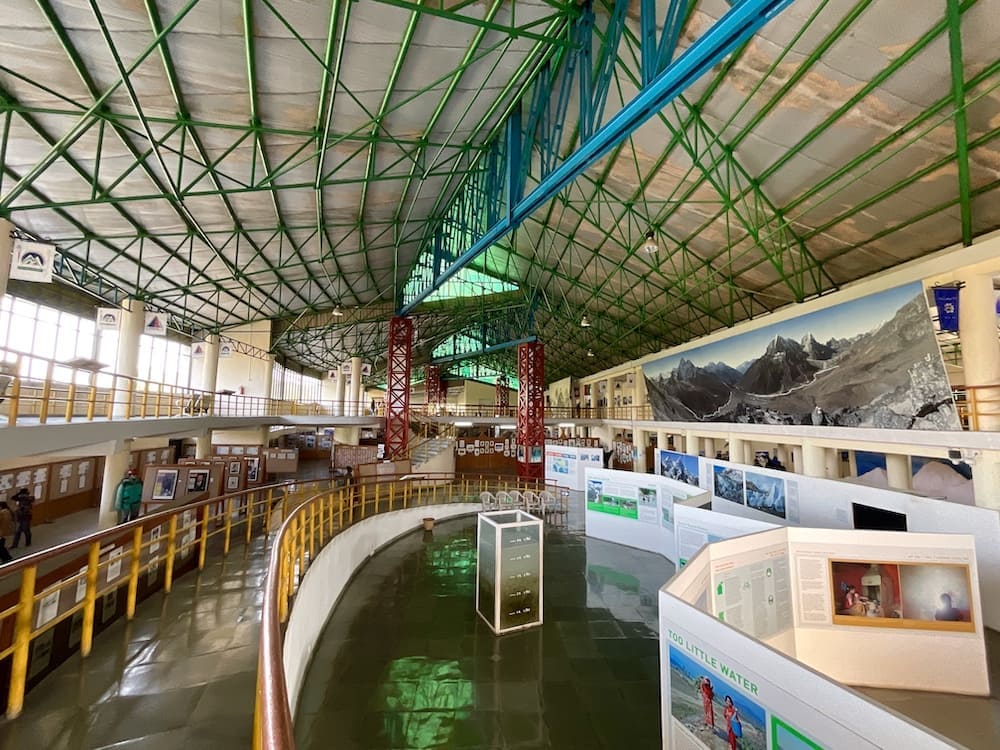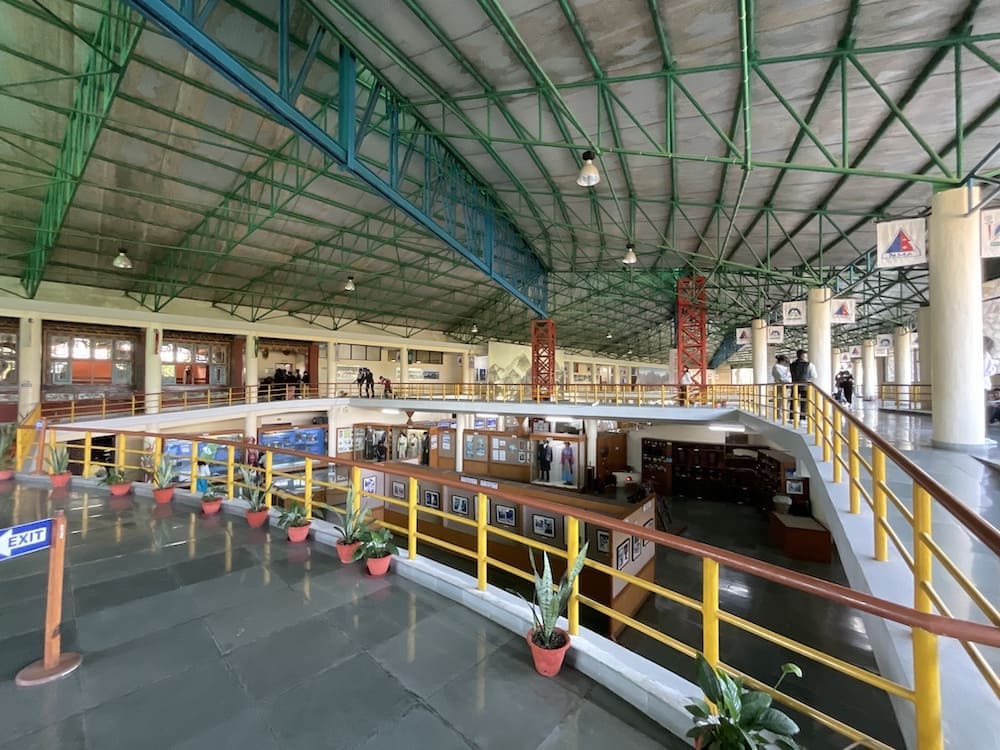Nestled in the picturesque city of Pokhara, Nepal, the International Mountain Museum (IMM) is a must-visit destination for anyone interested in the history, culture, and ecology of the Himalayas. This world-class museum boasts an impressive collection of exhibits, displays, and artifacts that highlight the beauty and complexity of the world’s highest mountain range.
With Nepal’s rich history and culture, the Mountain Museum does a great job of capturing the stark differences between the different people in Nepal. Additionally, the international museum captures the distinct history of mountaineers, and the historic summit pushes of the tallest mountains in the world!
If you are a history buff looking for an exciting way to take in the history of the mountains, then the International Mountain Museum in Pokhara is a must-visit!
Operating Hours and Entrance Fee:
The museum is open from 8:30 A.M to 5:30 P.M everyday of the week. The entrance fee depends on the visitor. For Nepalis it is NPR 100, and for Foreigners it is NPR 500.
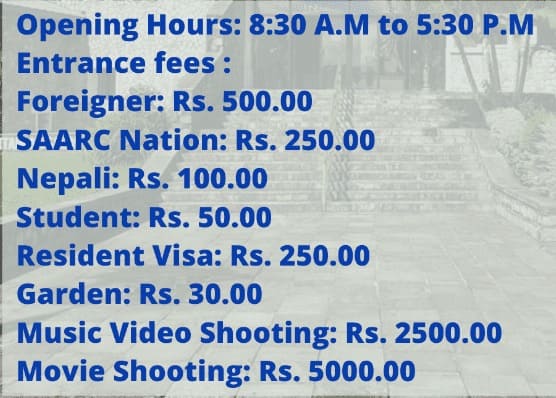
For a complete breakdown of the entrance fee please see the table below:
| Visitor | Entrance Fee |
|---|---|
| Foreigner | Rs. 500.00 |
| Nepali | Rs. 100.00 |
| SAARC National | Rs. 250.00 |
| Student | Rs. 50.00 |
| Resident Visa | Rs. 250.00 |
| Garden | Rs. 30.00 |
| Music Video Shooting | Rs. 2500.00 |
| Movie Shooting | Rs. 5000.00 |
History and Background
The International Mountain Museum’s foundation stone was laid on December 1st, 1995. However, a soft opening was on May 29th, 2002, and the official opening occurred on February 5th, 2004. The International Mountain Museum was built to preserve and promote the rich cultural and natural heritage of the Himalayas. The museum is in Ghari Patan, Pokhara, behind the old domestic airport.
The museum was founded by the Nepal Mountaineering Association (NMA), a non-governmental organization that promotes mountaineering and adventure tourism in Nepal. The International Mountain Museum, located at the foot of Machapuchare Fishtail Mountain, maintains systematic records of successful climbs of the world’s tallest mountains (eight-thousanders), the region’s geographic flora and fauna, and human activities throughout the region. Even the museum’s roof is designed in the shape of a mountain skyline, providing a striking view to visitors before they even enter the main gate.
The Exhibits and Displays of the Mountain Museum
The International Museum has a massive premise spread across two floors, each featuring a different aspect of the Himalayan region. The exhibits cover the flora and fauna of the Himalayas, and mountaineering history, with displays on the early expeditions to the Himalayas and the modern-day achievements of climbers from around the world. Additionally, there are exhibits covering the ethnic groups living in the Himalayas, highlighting their unique cultures, customs, and traditions.
Below are the exhibits and displays in the Mountain Museum in Pokhara.
1. Mountain People Gallery:
The museum showcases the lifestyles and cultures of indigenous inhabitants from mountainous regions of Nepal and around the world. Visitors can take in the immersive displays while enhancing their understanding and knowledge of the communities throughout the region.
To really experience the mountain people gallery, check the adjoining video hall, where you can experience the people, culture, and mountains of the Khumbu region by watching an informative video. Just be prepared as it’s a little long and slow – but super interesting if you can sit through the whole thing!
2. Mountain Activities Gallery:
The equipment necessary for mountain and rock climbing is showcased to visitors. Additionally, on the first floor, visitors can learn about the legendary tales of the Yeti, its myths, and the publications related to the elusive giant! Despite no one having seen the creature, many have claimed to have witnessed the Yeti. Some have even photographed its footprints on the icy terrain, while others have reported sightings with their own eyes. This section of the museum is dedicated to one of the greatest mysteries of the Himalayas!
3. Lakhang:

The Lakhang room is available for those who wish to take in the true beauty of the Buddhist prayer room and is always ready for visitors to offer their prayers. Adjacent to the room is a library catering to scholars and students, offering a wide range of resources for their study and research needs.
Nepal has a rich history with Buddhism, as Buddha was born in Lumbini, Nepal!
4. Mountaineering Gear and Climbing Records
In this section you will see the various gear used throughout the history of climbing expeditions in the Himalayas. There are ice axes, oxygen cylinders, and even down jackets and other mountaineering apparel, dating back 60-70 years!
You can also find accounts of mountaineering records from around the world. These include events like Babu Chiri Sherpa’s record of 21 hours on top of Everest, Tenzing Norgay and Edmund Hillary, as well as climbers from different countries around the world. Additionally, you can find information about the different climbing routes leading to the summit of Everest, such as the 1963 West Ridge Everest Summit route, as well as the deadly Khumbu Icefall.
Events and Celebrations at the Museum:
One of the most important events celebrated at the Museum is International Mountain Day, observed on December 11th every year. International Mountain Day aims to raise awareness about the importance of mountains to the environment and highlight the challenges mountain communities face.
The topic of International Mountain Day changes every year and is designed to draw attention to specific issues related to mountain regions. The museum also hosts other events and celebrations throughout the year, including cultural festivals, mountaineering expeditions, and workshops on mountain ecology and conservation.
Visiting the Mountain Museum:
The International Mountain Museum is located in Pokhara, about 200 km west of Nepal’s capital, Kathmandu. The museum is easily accessible by car or public transport. It is situated about 2 miles southeast of Pokhara’s lakeside and will take approximately 15 minutes to drive there or 45 minutes to walk.
The admission fee is affordable, and the museum is open every day of the week, from 8:30 am to 5:30 pm. I suggest visitors allocate at least two hours to explore the museum fully.
The museum also has a large garden and ground around the outside of the building. It has a nice water feature, a restaurant (run by Fresh Elements in Pokhara), a rock climbing wall, and a replica of the Himalayas for kids to climb – or adults if you want to have fun [:
If you want to pair your museum visit with some other activities, you can also check out the Gupteshwor Cave or grab lunch at the Little Tibet in the Tibetan Refugee Camp.
International Mountain Museum in Pokhara
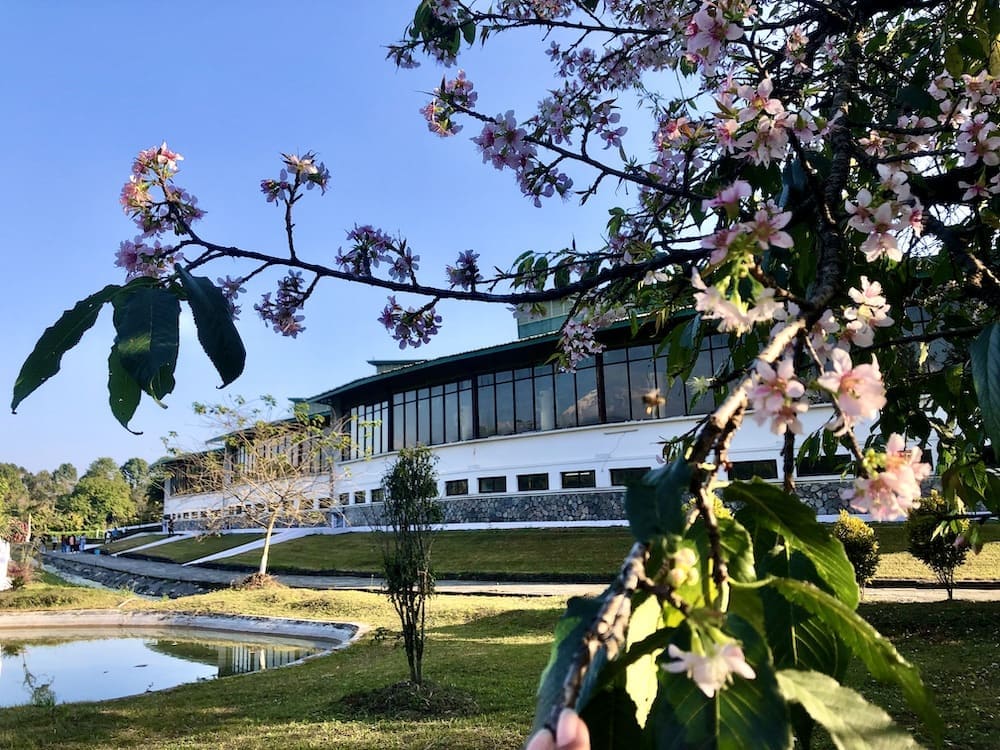
The International Mountain Museum in Pokhara is a fascinating and educational destination that offers a unique glimpse into the culture and ecology of the Himalayas. Whether you’re a mountaineering enthusiast, a cultural buff, or a nature lover, this museum has something to offer for everyone.
So why not plan a trip to Pokhara and discover the wonders of the International Mountain Museum for yourself?
FAQs: International Mountain Museum
Below are some of the most frequently asked questions regarding the International Mountain Museum in Pokhara!
The International Mountain Museum’s foundation stone was laid on December 1st, 1995. The soft opening was on May 29th, 2002, and the official opening occurred on February 5th, 2004.
Pokhara has several museums, including the International Mountain Museum, Gurkha Memorial Museum, and Pokhara Regional Museum.
International Mountain Day aims to raise awareness about the importance of mountains to the environment and highlight the challenges mountain communities face.
The topic of International Mountain Day changes every year and is designed to draw attention to specific issues related to mountain regions.
Yes, the Museum is worth visiting. You can explore the region’s rich history of mountains and mountaineering. It contains exhibits on mountain expeditions, the culture and heritage of people living in Nepal, and mysteries in the Himalayas. It is a great place for tourists, locals, and families to spend the day and learn about the Himalayas.
